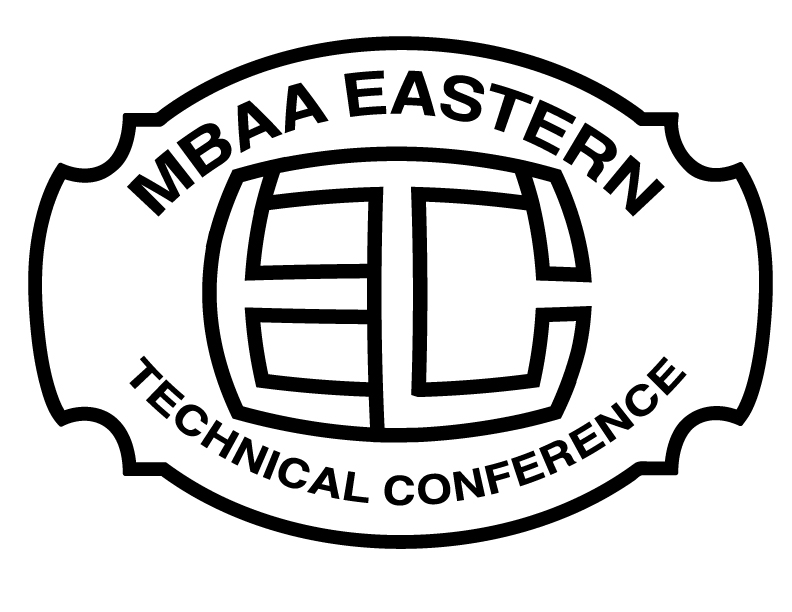
PROGRAM(Preliminary, subject to change)
FRIDAY, MARCH 23
10am-9pm Exhibits and Posters
Grand Ballroom
10am-1pm Conference Registration
Avalon Conference Center
1pm-5pm Technical Presentations
Avalon Conference Center
1pm Pattie Aron, Rahr Malting
FAN and Flavor Impacts: The Fundamentals of a Brewer's Dilemma
2pm John Paul Maye, Hopsteiner
Dry Hopping and Its Effects on Beer Bitterness, the IBU Test, pH, and Beer Foam
3pm Gregg Norris, GEA
An Innovation For Improving Performance and Flexibility of Unitank Fermentations
4pm Richard Preiss, Escarpment Labs
Characterization of Kveik, Landrace Norwegian Brewing Yeast
5pm-630pm Reception in the Grand Ballroom
630pm-9pm Keynote Dinner with Steve Dresler,
Sierra Nevada Brewing Company
A Career in Craft
SATURDAY, MARCH 24
8am-8pm Exhibits and Posters
Grand Ballroom
8am Breakfast
Avalon Conference Center
9am-12pm Technical Presentations
Avalon Conference Center
9am Andy Tveekrem, Market Garden Breweries
Sooner Rather Than Later: Six Things That Can Go a Long Way Toward Ensuring Higher Quality Beer
10am Stijn Mertens, KU Leuven
The Yeasts of Tomorrow
11am Bob Hansen, Briess Malt
Understanding Beer and Foam Color
12pm-115pm Lunch
Grand Ballrooom
130pm-430pm Technical Presentations
Avalon Conference Center
130pm Tim Kostelecky, John I. Haas
New Hop Varieties-The Art and Science
230pm Bill Maca, HWM Yeast Solutions
Fermentation Flavors and the Influence of Various Operational Parameters on their Production
330pm Joe Hertrich
Challenges of All Malt Brewing with North American Two Row Barley
5pm Raffle and Wrap-up
Avalon Conference Center
6pm Closing Happy Hour
Grand Ballrooom
TECHNICAL PROGRAM PRESENTERS
Pattie Aron, Rahr Malting
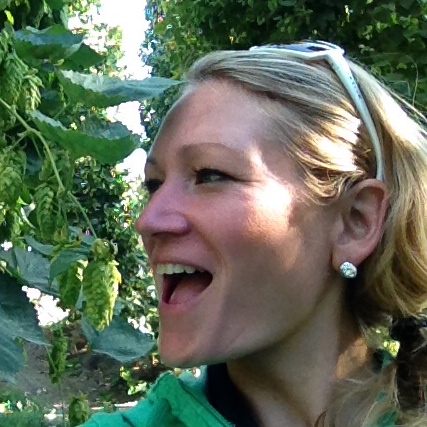
FAN and Flavor Impacts: The Fundamentals of a Brewer's Dilemma
This talk will cover what is currently known about malt type and varietal differences in FAN levels and make up. It will then move into a discussion on FAN impact on beer flavor as well as potential resultant beer flavor stability issues.
Pattie Aron obtained a B.S. in Biochemistry from Elmira College and both her M.S. and Ph.D degrees in Food Science and Technology from Oregon State University. Pattie’s passion for fermentation led her to conduct graduate research in wine chemistry and brewing science. From 2011- 2016 Pattie was the Senior Hop Chemist in the Applied Brewing and Research team at MillerCoors. In this role she researched and innovated hopping products and technology, directed brewing trials related to hop variety development, and developed a hop sensory program. Her research also focused on off flavor troubleshooting as well as beer flavor and flavor stability pertaining to hops and other raw materials. In her current role, Pattie is a brewing and raw materials chemist for Rahr Malting. She currently conducts research and development and manages the technical research and brewing laboratories in the Brewing Research and Innovation group at the Shakopee, MN headquarters.
Bob Hansen, Briess Malt
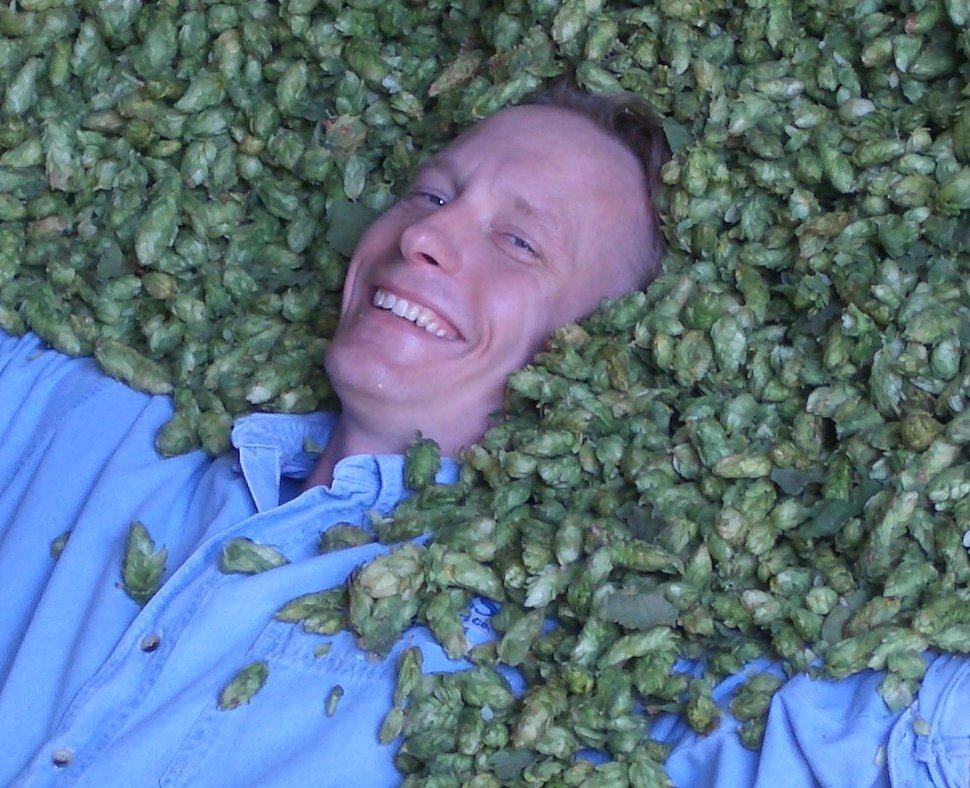
Understanding Beer and Foam Color
The perceived color of a beer and it’s foam are two of the most important consumer sensory expectations. This enlightening talk will discuss how the different ways coloring compounds contributed by different malt types combine with glass shape, ambient light, bubble size and other factors to determine the visual color of beer and foam perceived at the time of pour.
As Manager of Technical Sevices at Briess Malt and Ingredients, Bob leads a staff of experts who help brewers and bakers understand how malt can make everything better. Prior to starting his 25 year career in brewing, Bob studied a variety of topics before eventually settling with a BS in Biochemistry and Applied Math and Physics. Proving his father wrong, he has applied the knowledge he gained from 36 credits of college fine arts classwork to solve practical, real world problems and has become a recognized authority on beer color.
Joe Hertrich

Challenges of All Malt Brewing with North American Two Row Barley
Classic training for brewers has always articulated the attribute differences between two-row barley and six-row barley, and the brewer’s malts made from each. While the difference descriptions remain accurate globally, they are no longer adequate to explain North American two-row barley and malt. Since 1972 and the introduction of Klages two-row barley, the breeding of new two-row malting barley has evolved the development of a distinctly different set of two- row attributes. This presentation traces the history of two-row barley in North America and this breeding evolution, proposes that there are actually three barley types in North America, and focuses on the unique challenges that North American two-row represents for all malt brewers.
Joseph D. Hertrich is the retired Group Director, Brewing Raw Materials at Anheuser-Busch, Inc. His responsibilities included the operation of the company’s malt plants, rice mills and hop farms, and the supervision of all facilities that produced and handled brewing raw materials for Anheuser-Busch products worldwide.
Prior to joining Anheuser-Busch, Mr. Hertrich held various positions in brewing with The Stroh Brewery Company, the Pabst Brewing Company, and the Christian Schmidt Brewing Company. In retirement, he continues to consult, write, and speak on his observations over 50 years in the U.S. brewing industry.
Mr. Hertrich is a member of MBAA, ASBC, Brewers Association, and the Craft Maltsters Guild. He is also a past member of the American Malting Barley Association and the Canadian Brewing and Malting Barley Research Institute.
Tim Kostelecky, John I. Haas
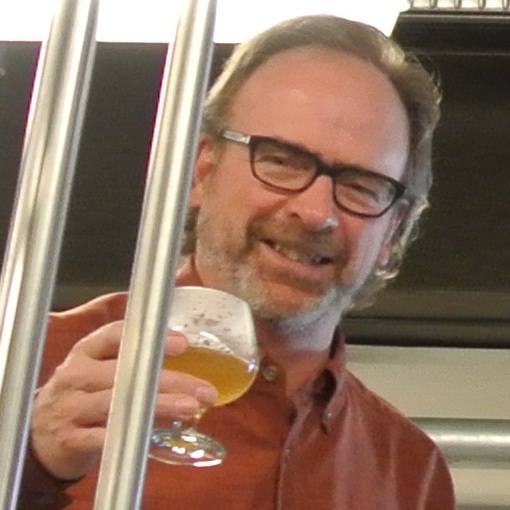
New Hop Varieties-The Art and Science
There’s a lot going on behind the scenes before a new hop variety is released to the market, and it takes nearly a decade from cross-breeding to commercial status. Much of that time is spent evaluating agronomic performance, but most of the effort is spent on beer flavor evaluations and acceptance. To be successful, a hop has to please the grower, brewer and ultimately the beer consumer – satisfying the unpredictable demands of the market. Numerous considerations and decisions go into the process, leading to the few successes and many failures along the way.
Originally from Colorado, Tim worked for 18 years with Coors Brewing Company in Golden as a brewing chemist in research and quality assurance. His foray into hops came from his involvement with the Coors hop quality program, and because of his enthusiasm for hops, joined John I. Haas, Inc. in Yakima as Technical Services Manager in 1996. From 2001 to 2007, he held the position of general manager for the Advanced Products Division of Haas in Washington, DC, but is now back in Yakima as Hops & Brewing Technical Specialist. Tim collaborates with brewers in the use of hops and hop products and provides hops education and training through various means including the Barth-Haas Hops Academy program. Tim is an active member of the Master Brewers Association of the Americas (MBAA) and the American Society of Brewing Chemists (ASBC) - serving as ASBC president in 2004-2005.
Bill Maca, HWM Yeast Solutions
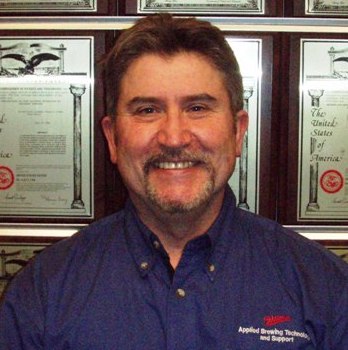
Fermentation Flavors and the Influence of Various Operational Parameters on their Production
How can we manipulate operational parameters such as pitch rate, temperature, dissolved oxygen, CO2 pressure and wort composition to achieve the desired flavor notes we want in fermentation?
Bill is currently the owner of his own consulting company, HWM Yeast Solutions LLC, which provides consultation services in the areas of yeast propagation, yeast management, fermentation and troubleshooting microbiological related issues in breweries and wineries. He has over 38 years of experience in the brewing industry, starting in Quality Control at Miller’s Albany Brewery until retiring as the Senior Yeast /Fermentation Scientist from the MillerCoors Technical Center in Milwaukee in 2013.
The last 5 years he has consulted in various sized breweries primarily in the Craft industry.
Bill is a member of the MBAA, American Society of Brewing Chemists, and the Brewer’s Association. He is a faculty member at the Siebel Institute of Technology lecturing in the Diploma and Concise courses, and the annual Brewing Microbiology course held in Montreal.
Bill’s past contributions for the MBAA include presenting on yeast propagation related topics at national meetings including the WBC and Brewing Summit and participating as a lecturer in the MBAA Malting/Brewing and Packaging courses in Madison WI.
John Paul Maye, Hopsteiner

Dry Hopping and Its Effects on Beer Bitterness, the IBU Test, pH, and Beer Foam
Dry hopping is very popular among craft brewers, however, many brewers are unaware that dry hopping can significantly alter the hop acid composition of beer which can effect a beers bitterness. This change in hop acid composition also effects the IBU test results causing these results to be inconsistent with the sensory results. Dry hopping can also effect beer foam and a beer’s pH. By performing comprehensive analysis utilizing High Performance Liquid Chromatography, UV Spectrophotometric Analysis (IBU Test), Nibem Foam Analyzer, and pH on beers before and after dry hopping, this work will better explain why and how dry hopping affects bitterness, the IBU test, foam, and pH.
Dr. John Paul Maye is Technical Director at Hopsteiner with over 23 years of experience in the hop industry. He received his Ph.D. degree in Organic Chemistry at Purdue University in 1994, and started his work as a hop chemist in 1993. He has developed many new products and applications for hops inside and outside the brewing industry and has many publications and patents. Over the last couple of years his research has focused on dry hopping and how it can change the hop acid composition of beer, effect bitterness, the IBU test, pH and foam.
Stijn Mertens, KU Leuven

The Yeasts of Tomorrow
Despite the broad array of different yeast species and strains used in industrial processes, many of the currently used yeasts are sub-optimal. Using a combination of robot-assisted phenotyping and high-throughput genome shuffling, we have generated several new yeast variants that show superior industrial performance; including increased ethanol production, temperature resistance, and flavor formation. Several of these yeasts are already used for commercial production. We are currently exploring novel microfluidics and lab-on-chip approaches to further the genetic potential of industrial yeasts.
Stijn Mertens received a BSc in Bioscience Engineering from the University of Leuven, Belgium in 2011 and a MSc in Bioscience Engineering, with a major in Cell and Gene technology, and a minor in Industrial Microbiology from the same university in 2013. He did his master thesis in the VIB laboratory for Systems Biology led by Proessor Kevin Verstrepen in 2012-2013 for which he was awarded the annual MSc thesis prize of the Royal Society of Brewing Schools. Later on, he joined the lab of Prof. Verstrepen as a PhD candidate, focusing on broadening the aromatic spectrum of lager yeast. While he is currently finishing up his doctoral thesis, he is the head brewer of the new 5hl pilot brewery at the university and is highly involved in the industrial research conducted at the lab.
Gregg Norris, GEA

An Innovation for Improving Perfomance and Flexibility of Unitank Fermentations
For many years brewers have worked to optimize their fermentations. This presentation looks at that history and an inventive way to increase production capacity while realizing various additional benefits through new fermentation design technology.
Gregg Norris started his brewing career in 1986 as a research brewer at Anheuser-Busch's St. Louis brewery. Seven years and two AB breweries later, he left the corporate brewing world for the burgeoning craft beer sceen, as the in-house brewing expert at the Pub Brewing Company, a manufacturer who designed and built hundreds of small breweries during his tenure from 1993 to 1999. As the century closed, a new challenge was discovered at GEA Tuchenhagen. Serving as a brewery technical manager, Gregg was working with the largest brewers in America, helping them hard pipe and automate their cellars. In 2002, fate brought Gregg back to craft beer. Responding to a unique opportunity, he opened his own brewery, Clay Pipe Brewing Company, near Baltimore, Maryland. Responsibility for all aspects of a brewery enterprise brought new perspectives to Gregg's appreciation of all things beer! After eight years of full emersion, Gregg sold the brewery and went back to work. Now responsible for GEA brewery sales in the Eastern United States and Canada, Gregg is in his perfect place, talking brewhouse and cold block design at the highest level, while traveling and sampling the beers of his peers. Mr. Norris received a bachelor's degree in Food Technology from the University of Massachusetts, followed by vast experience and independent study in the brewing industry.
Richard Preiss, Escarpment Labs
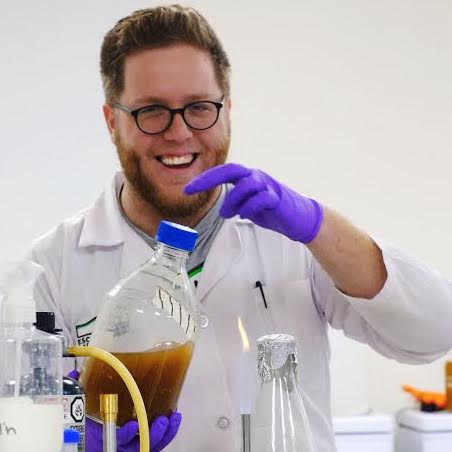
Characterization of Kveik, Landrace Norwegian Brewing Yeast
Human activity has resulted in the domestication of Saccharomyces cerevisiae yeasts specifically adapted to beer production. While there is convincing evidence beer yeast domestication was accelerated by industrialization of beer, there also exists a home-brewing culture in western Norway which has passed down yeasts referred to as kveik for generations. This practice has resulted in yeasts which are typically highly flocculant, POF-, and exhibit a high rate of fermentation, similar to other lineages of domesticated yeast. Additionally, these yeasts are highly temperature tolerant due to the traditional practice of pitching yeast into warm (>30 ºC) wort. Our data reveal potential use of kveik yeasts for wider brewing applications, especially in craft brewing. Subsequent craft brewery collaborations highlight the great potential for kveik yeasts in the modern brewery, especially in popular beer styles such as IPA and quick sours.
Richard Preiss is a microbiologist and co-founder of Escarpment Laboratories, Canada's first liquid yeast producer catering to craft breweries and other craft beverage producers. Escarpment Laboratories produces a range of yeast and bacteria cultures to help Canadian brewers achieve their fermentation goals. At Escarpment Labs, Richard is a driving force behind research and development, focused on discovery and testing of novel yeast strains. This has included projects characterizing Norwegian farmhouse ale yeasts, Brettanomyces from wine and beer, and wild yeasts from fruits and trees in Canada.
Andy Tveekrem, Market Garden Breweries
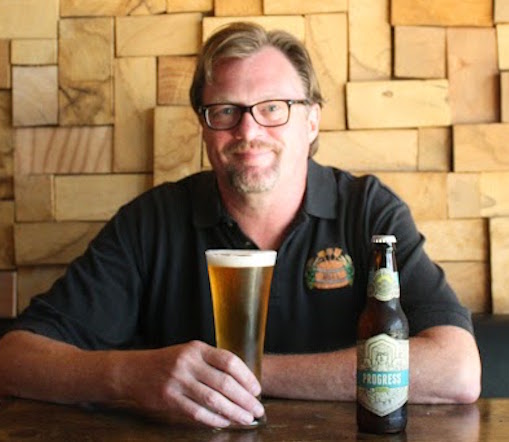
Sooner Rather Than Later: Six Things That Can Go a Long Way Toward Ensuring Higher Quality Beer
There are a lot of breweries being built these days and the pressure in the market is getting more intense as a result. Every opportunity to bring an advantage to your brewery should be considered, and putting together a brewery consists of many items all working together. But some items can be very useful and yet still be overlooked in the initial buildout or in expansion planning. 6 items will be discussed, noting their utility, benefits, and where practical -- some advice on how to specify and build for yourself. Agree or disagree, it is still worth the discussion!
Andy Tveekrem is Brewmaster and Co-Founder of the Market Garden Breweries, which include Market Garden Brewery (brewpub), Nano Brew Cleveland (brewpub/pilot brewery), and Market Garden Craft Brewery (production brewery). He has been working on these various endeavors since 2010. Prior to this he has been Brewmaster at Dogfish Head Craft Brewery in Milton, DE, Frederick Brewing Co. in Maryland, and Great Lakes Brewing Co. in Cleveland. Andy is also active in the Master Brewers Association, serving as national Technical Committee Chair as well as representing District Midwest on the Board of Governors.
KEYNOTE SPEAKER:Steve Dresler, Sierra Nevada Brewing Company
A Career in Craft
As one of Sierra Nevada Brewing Companies first employees, Steve Dresler has been at the helm of their operations since 1983. As a student of biology and chemistry at CSU Chico, Steve found his calling while homebrewing. Under his direction, Sierra Nevada won eight World Beer Cup awards, 31 GABF medals, and has grown into the third largest craft brewery in the United States. He has overseen the development and production of almost all their new beers for more than thirty years and is now revered as one of the world’s most beloved brewmasters. Steve has championed the craftsmanship and artistry of modern hop-forward styles and techniques while pushing the boundaries of craft beer. Steve was awarded the Russel Schehrer Award for Innovation in Brewing in 2015, and in August of 2017 was awarded a Knighthood in the International Order of the Hop, the first American brewmaster to ever receive this honor. After more than 34 years, Steve is now enjoying his much deserved retirement in California.
POSTERS
A Comparison of Selected Lactic Acid Bacteria For Use in the Production of Sour Wort and Beer.
Timothy Lozen, Bell's Brewery, Inc.
Risks and Rewards of Anaerobic Digester Systems for Craft Brewery Wastewater Treatment
Manaf Farhan, EMG International, Inc.
The Importance of Cleanliness: An Overview of CIP and COP Systems
Blake Kinnett, M.G. Newell Corporation
Kona Longboard Lager: Life Cycle Analysis
Julia Persen, Craft Brew Alliance
Optimization of Premature Yeast Flocculation (PYF) Factor Assay
Jigar Brown, Pattie Aron, Rahr Malting Co.
GY7B is a Novel Yeast Capable of Rapidly Producing Sour Beer Without Bacteria
Gabriella DeMichele, Stiven Mits, Lindsay Micha, Kent Pham, Matthew Farber, PhD
Development of a Selective Media For the Detection of Diastaticus in the Brewery
Kent Pham, Gabriella DeMichelle, Matthew Farber, PhD
Evaluation of Culture Medias (YM and YNB) and Copper Sulfate Concentrations for Wild Yeast Detection
Maydelin H. Espinosa, Molson Coors Brewing Company
Sensory Thresholds of Hop Volatile Compounds in Beer
Meghan Peltz, Sierra Nevada Brewing Company
Detection of Glass Bottle Defects Prior to Filling
Jeff DeVoy, HEUFT USA
Dry-hopping's Effect on Beer Foam
Dr. John Paul Maye, Hopsteiner
Capturing Terroir: Isolation and Characterization of Local Wild Yeast
Dr. Kari Murad, The College of Saint Rose
